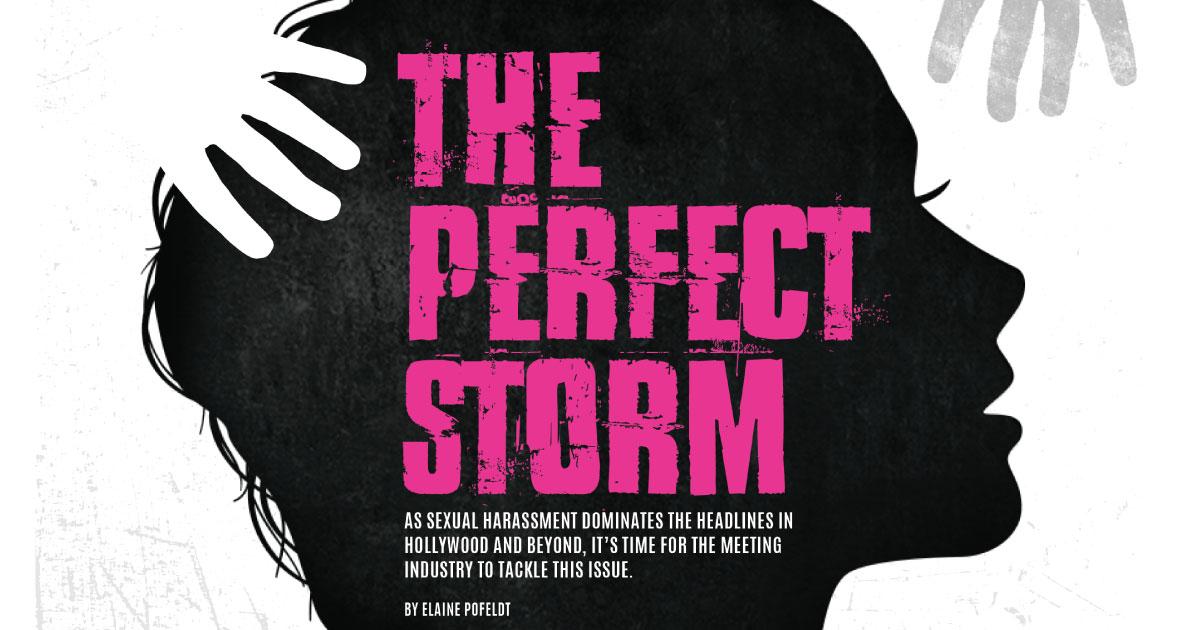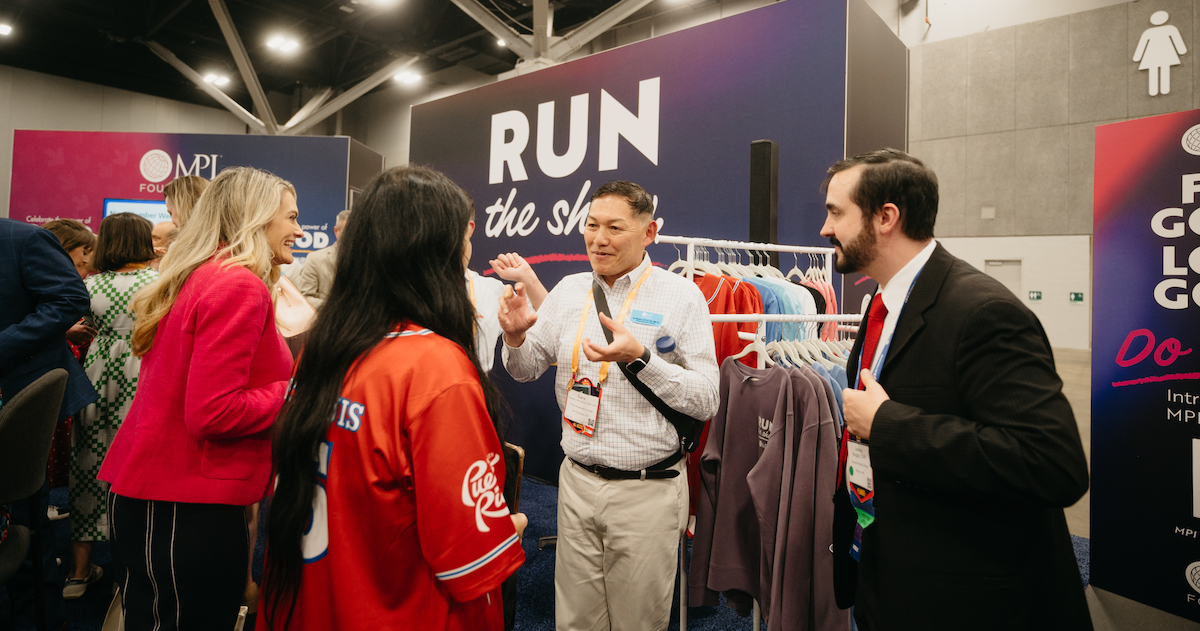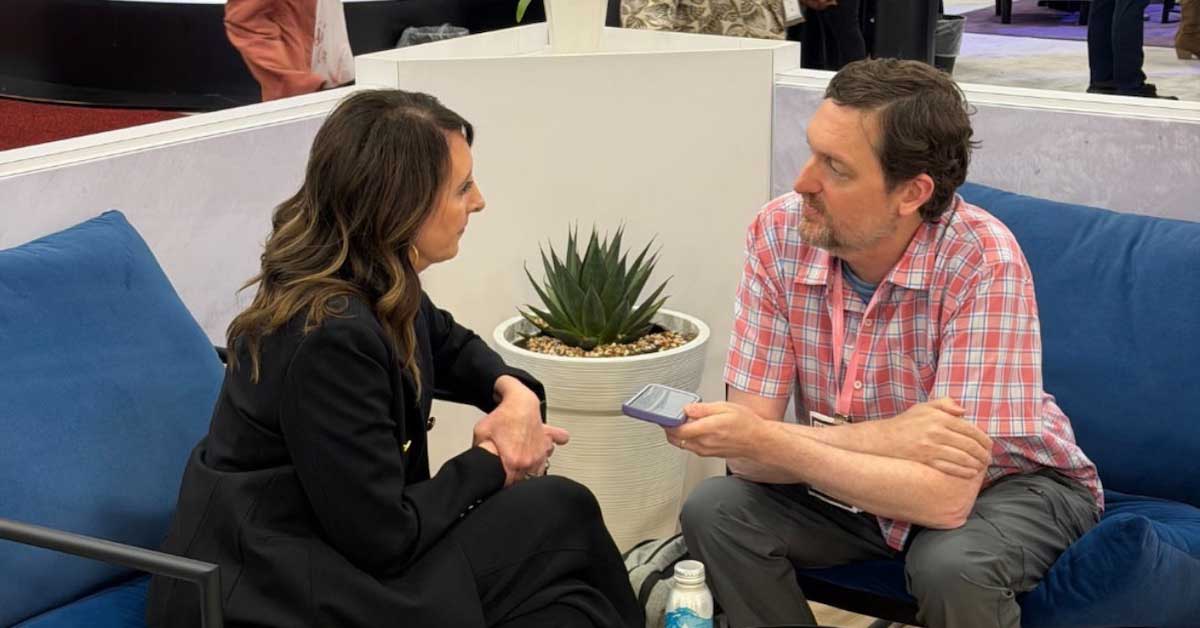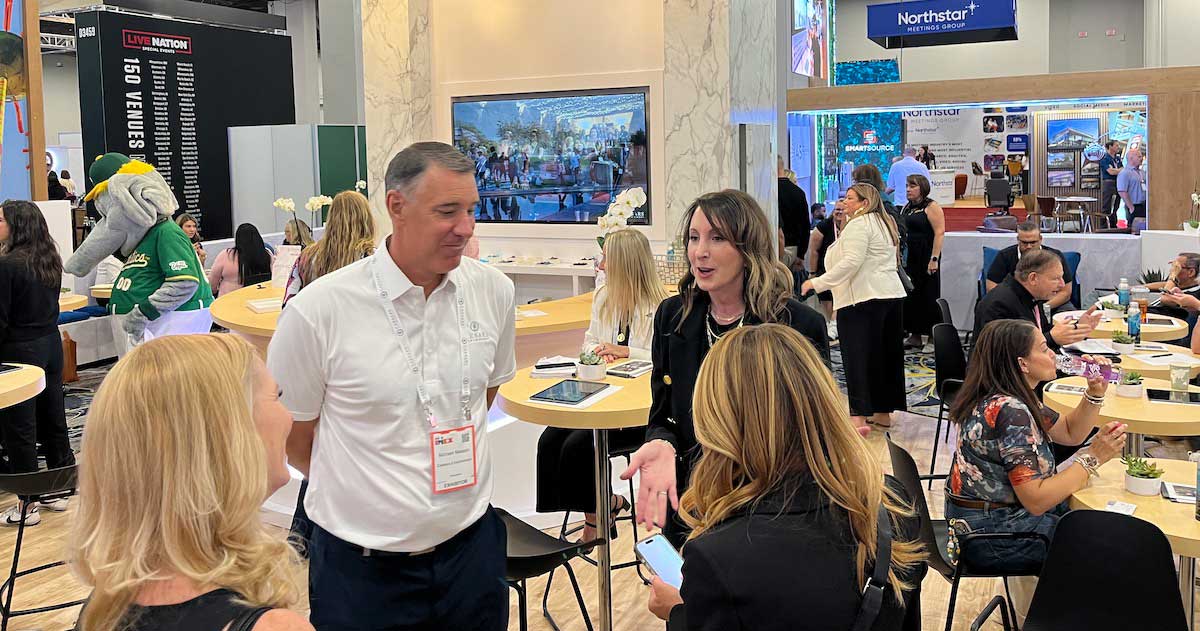With each passing day, new headlines are emerging about incidents of sexual harassment, often involving powerful older men preying on young women who work for them. Though the highest-profile cases have taken place outside of the meeting industry—in Hollywood, the news media, government and the restaurant industry—meeting professionals cannot ignore them.
Many note that the industry has unique vulnerabilities: It is not only possible for sexual harassment to occur within companies that employ people in the field, but also at events arranged for clients.
“As meeting planners and organizers, we are trained to always be thinking about the risk to our organization and those we represent,” says Mazda Miles, CMM (MPI Philadelphia Area Chapter), chief event strategist at Perfection Events Inc. in Philadelphia.
Courtney Stanley, a speaker, writer and business strategist at Courtney Stanley Consulting based in the Greater Grand Rapids, Mich., area, likens meetings, conferences and events to “the perfect storm” for sexual harassment to take place.
“You have attendees from all over the world who have this vacation mindset,” she says. “People forget about their responsibilities at home. They are in an environment where people can have a little bit more fun and maybe not be as professional. Then you have the influence of the open bar, long nights and parties.”
Stanley was so concerned about the issue that she recently wrote an essay about it for MeetingsCanada.com.
Given the ongoing stream of headlines, some meeting professionals say that clients are coming to them with questions about how best to run meetings to prevent sexual harassment. While it doesn’t appear that many organizers are canceling meetings outright to avoid the possibility that attendees might misbehave, some are asking pointed questions about how much alcohol should be served.
“Yes, I have absolutely had a lot of questions around alcohol and how to be careful to ensure they are not creating opportunities,” Miles says. “Whether they serve it or not may not change, but the way they do may. If they before had a completely open top-shelf bar with liquor they may say, ‘Hey, we’ll go to beer and wine.’ Those kinds of things are happening, so if people do choose to leave there and go somewhere else and continue to indulge, if you will, it cannot be said the organization, the event or the organizers provided the opportunity for that to be.”
The topic of whether alcohol should be limited at meetings has also come up in industry discussions on Facebook and in digital discussion groups, says Joan Eisenstodt (MPI Potomac Chapter), a consultant, facilitator and trainer at Eisenstodt Associates LLC in Washington, D.C. Eisenstodt doesn’t believe that’s the answer.
“That means nothing,” she says. “People can drink before, or bring a flask with them.”
Some meeting organizers are raising the issue through broader inquiries. Annette Gregg, CMM (MPI San Diego Chapter), a San Diego-based regional senior vice president at destination management firm AlliedPRA who also does private consulting for diversity initiatives, says her clients have not inquired about sexual harassment per se but have asked prior to meetings what plans are in place to deal with an “out of control” attendee.
“We have had a few of those talks recently,” she says. “A few clients have brought that up: What do you do on site? Are the parameters clear for security on when they can remove someone? What is permissible? When can we cut them off from drinking?”
Related Article: MPI Official Statement Regarding Anti-Harassment Position
Sexual & Gender Based Harassment Study
One indicator of why there is mounting concern about harassment at meetings came in a study of scientific meetings in early 2017 by Sherry Marts, Ph.D., CEO of S*Marts Consulting, which provides consulting and training to nonprofits and academic institutions in areas such as harassment and bullying. In the online survey of 221 people, 87 percent of respondents were women.
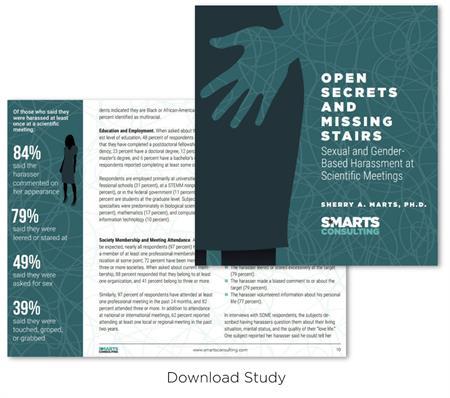
The study found that 60 percent of respondents said they had experienced harassment at a meeting at some point in their careers. Among these respondents, 84 percent
said the harasser made comments about his or her appearance, 79 percent were leered or stared at, 49 percent were asked for sex and 39 percent were touched, groped or grabbed.
Marts’ survey also provided some indication of how attendees wanted the industry to deal with it. The research found that 70 percent wanted to see a meeting code of conduct that is strictly enforced, and 77 percent of respondents said offenders should be barred from future meetings.
Some in the industry say that a code of conduct would be a good place to start for all types of meetings.
“This was a reminder we need to pull out that 75-page manual and remind everyone of how they need to show up,” Gregg says.
One practice Gregg found to be effective at her previous employer in the financial services industry was holding a mandatory pre-conference phone call in advance of a big event to remind attendees of the company’s policies.
“I think they were ahead of their time,” she says.
But even if meeting organizers put such a policy in place, some wonder how freely victims will report incidents—given that they have long kept quiet due to fear of retaliation. Among those who said they were harassed in Marts’ survey, 54 percent did not know how or to whom to report it, 46 percent feared being labeled a complainer and 24 percent were worried about being blamed for causing the harassment.
“There are so many stories left to be told in our industry that may never come out,” Eisenstodt says. “People were afraid of reporting anyone because they were afraid of losing their jobs. That still exists today.”
#MeToo in Meetings & Hospitality
Eisenstodt wrote a blog about sexual harassment in early January called “#MeToo in Meetings and Hospitality: What’s Next?” for Meetings Today, recounting stories by victims whose identities were masked. In one case, a meeting vendor recalled being harassed by a boss in front of colleagues while wearing a swimsuit at a company retreat. She was asked to sign a paper saying she would not discuss the incident.
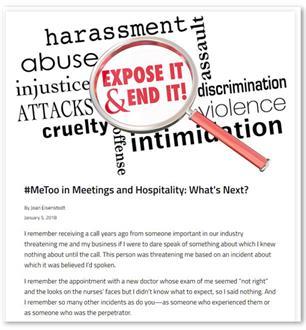 “After he did what he did to me, a co-worker sitting next to me said. ‘Don't be mad. It is like a dog humping your leg,’” the vendor told Eisenstodt. “I will never forget that comment. Like he does this to everyone and he is the boss. Like what they said about Charlie Rose. ‘That is Charlie being Charlie.’”
“After he did what he did to me, a co-worker sitting next to me said. ‘Don't be mad. It is like a dog humping your leg,’” the vendor told Eisenstodt. “I will never forget that comment. Like he does this to everyone and he is the boss. Like what they said about Charlie Rose. ‘That is Charlie being Charlie.’”
Harassment in the industry takes place outside of face-to-face meetings and the offices as well, in digital forms that can be intimidating, Stanley says.
“There are quite a few reports of people who have received inappropriate messages on LinkedIn from other peers in the industry,” she says. “LinkedIn is not just for business for some people.”
Eisenstodt would like to see the day arrive when meeting professionals may go to the CMP board and report harassment there. At the moment, she says, she has heard little about consequences for harassers.
“No one has said what the industry is going to do,” she says. “No one has said what these individual organizations are going to do. That is what we need to know. What I want to know is what is going to happen—what tone are they going to set? The policy doesn’t mean anything unless it is known there will be actions. What I fear is the wink, wink, nod, nod—we know this goes on.”
Using Technology to Combat Harassment
The issue is so challenging to solve that some are turning to technology to address it. Michael Rosenberg is president of WPV Corp., a startup in Mississauga, Ontario, that has developed a system aimed at reducing sexual harassment, harassment and workplace violence.
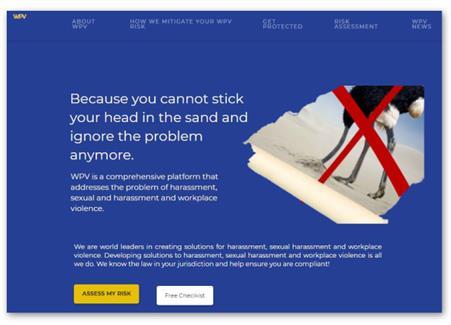 The software-based system includes a risk assessment instrument designed to identify office predators, an app for use in incident reporting and an independent reporting system in which WPV makes third-party recommendations to a company’s board if, for instance, the boss is behaving in a predatory manner—so the boss can’t prevent the information from coming to light. According to WPV Corp., the instrument has been validated in a study performed by St. Mary’s University of Halifax.
The software-based system includes a risk assessment instrument designed to identify office predators, an app for use in incident reporting and an independent reporting system in which WPV makes third-party recommendations to a company’s board if, for instance, the boss is behaving in a predatory manner—so the boss can’t prevent the information from coming to light. According to WPV Corp., the instrument has been validated in a study performed by St. Mary’s University of Halifax.
The system includes an app that attendees at a meeting can use to report sexual harassment. (“You can put in, ‘So and so is coming on to me—and what should I do?’” Rosenberg says.) That message can be sent to a designated individual other than the boss, such as someone in HR. Because incident reports live on WPV’s secure servers, someone at a company where harassment is taking place cannot manipulate the data to hide incidents, according to WPV.
WPV’s tool can also be used to assess how an organization’s culture, attitudes, behavior, rewards and punishment may be contributing to an environment where harassment flourishes.
“If you say your top performers are hitting their numbers but sexually harassing everyone—but you don’t want to lose them—you’re saying to everyone else it’s OK whatever you do, as long as you hit your numbers,” Rosenberg says.
Though the issue of sexual harassment will not be easily dealt with, “what I think is really good is the awareness,” says Janet Tan-Collis, founder and chief executive of East West Planners, a full-service experiential solutions provider based in Singapore and with offices in China and Malaysia, as well as president of the Singapore Association of Convention & Exhibition Organisers and Suppliers. “One wonders why it took so long for it to come up.”
SIDEBAR
Making Progress in 2018
International Women’s Day (IWD) 2018 is March 8. This year’s campaign theme is #PressforProgress. From the IWD website: “Now, more than ever, there’s a strong call-to-action to press forward and progress gender parity. A strong call to motivate and unite friends, colleagues and whole communities to think, act and be gender inclusive.” Events across the world, from High Tea in Melbourne to a Women of Influence Award reception in Alberta, will carry the #PressforProgress message forward.
MPI offers a four-hour course, Women in Leadership: Executive Leadership Skills that examines the key roles women play in the hospitality and meeting industries and how to overcome career obstacles to executive-level positions. Learn more about the program and register at www.mpiweb.org/education. The MPI Foundation has advanced the cause by awarding MPI chapters with grants that enable them to promote the Women in Leadership program.
MPI will also offer a Leadership Village at the World Education Congress, June 2-5 in Indianapolis, where leaders of all genders can find inspiration and empowering education.
